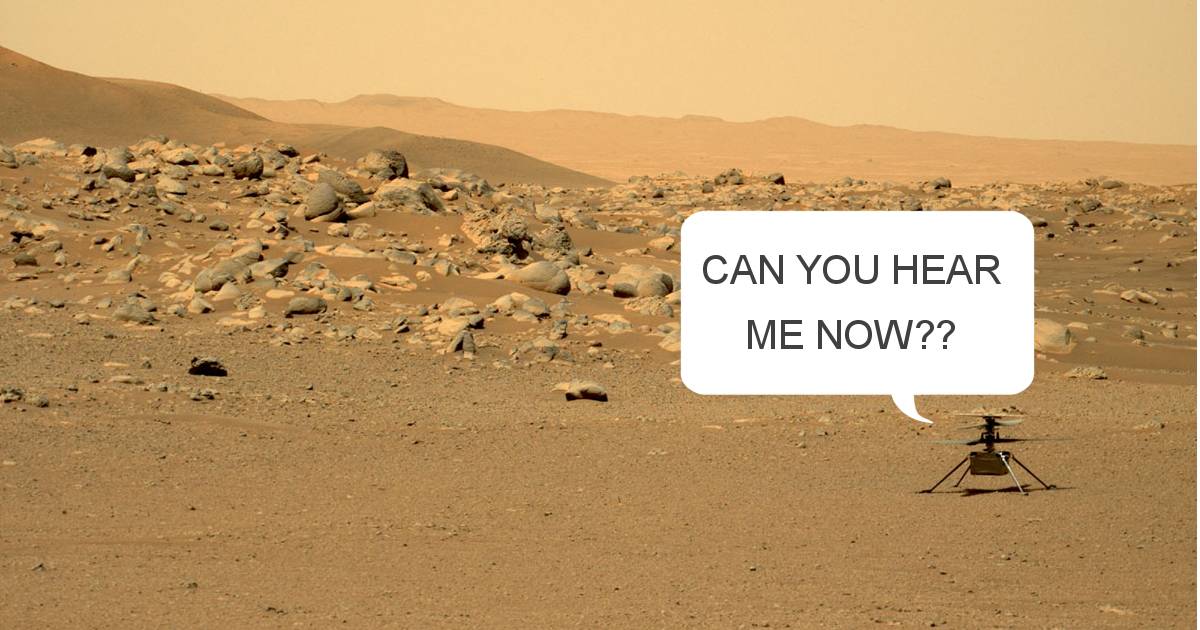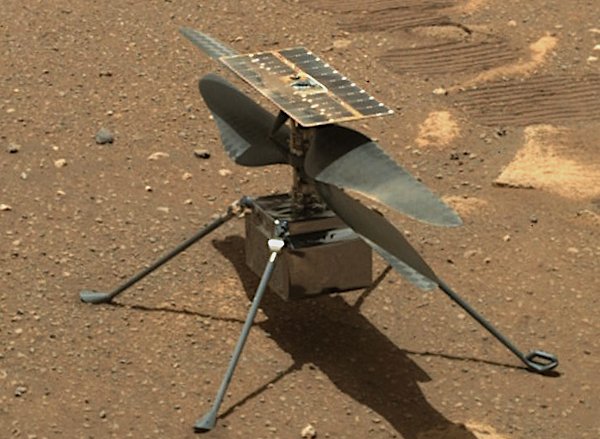
NASA’s solar powered helicopter Ingenuity was recently feared lost – but is battling on as it heads into a long Martian winter.
Ingenuity made the 471-million-kilometre journey to Mars aboard the rover Perseverance over 2020/21, and in early April last year the helicopter was dropped from the rover’s belly onto the red planet’s surface. Ingenuity successfully completed humanity’s first powered, controlled flight on another planet a few weeks later.
The 1.8-kilogram helicopter has a small solar panel measuring around 425 mm by 165 mm. This charges a lithium-ion battery pack containing six Sony Li-ion cells providing enough energy for a single 90-second flight per Martian day.
Designed to perform up to five experimental test flights over a month, NASA’s Mars helicopter has far exceeded expectations. To date, it has flown a total of 6.9 kilometres in 28 “sorties” over more than a year, providing a treasure trove of data researchers will be geeking out on for a long time.
But it recently looked as though Ingenuity’s career may be over after it missed a planned communications session with Perseverance – the first time such an event has occurred. Perseverance provides a crucial link between the helicopter and Earth, with Ingenuity sending its data and receiving commands via the rover.
Ingenuity Call Home
It was a tense couple of days for Ingenuity’s masters, but on May 5 communications were re-established. It appears the interruption was caused by the helicopter entering a low-power state; potentially as a result of an increasing amount of dust in the Martian atmosphere and lower temperatures as winter approaches.
The dust reduces the amount of sunlight hitting the solar panel, impacting on Ingenuity’s ability to recharge its lithium-ion batteries. When the battery pack’s state of charge dropped below a lower limit, the helicopter’s field-programmable gate array (FPGA) shut down. Among various important functions, the FPGA controls when Ingenuity is scheduled to reawaken for communications sessions with Perseverance.
The onboard clock reset, and the helicopter’s heaters also switched off.
“When the Sun rose the next morning and the solar array began to charge the batteries, the helicopter’s clock was no longer in sync with the clock aboard the rover,” said NASA. “Essentially, when Ingenuity thought it was time to contact Perseverance, the rover’s base station wasn’t listening.”
NASA boffins instructed Perseverance to spend much of May 5 to listen for a signal – and it was picked up. The helicopter’s critical health and safety data were good and the battery pack was 41% charged at that point. Since then, tweaks have been issued to try and help Ingenuity continue normal operations and survive the winter.
But even if it doesn’t, it seems NASA has gotten its money’s worth from this little solar powered helicopter it sent so far from home. What’s particularly interesting is Ingenuity was pretty much a last minute addition to the project and many didn’t believe it would work; in part due to the fact it contains a bunch of commercial off-the-shelf parts not designed for operating in the cold of deep space.


 RSS - Posts
RSS - Posts



Speak Your Mind